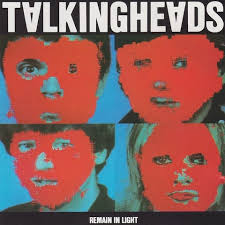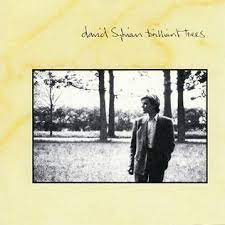For the invention of a sound. Jon Hassell burst into my awareness with the creation of an otherworldly sound that I had never heard before--that I have never heard replicated much less mastered: what I call the "ghost trumpet." I'm pretty certain that it was on Side Two of the Talking Heads' 1980 album Remain in Light (in particular the song "Houses in Motion" but, in fact, the whole side) that I first heard the unique sound of Jon's breathy horn, but it really wasn't until I heard Brian Eno's 1982 release, Ambient Music 4: On Land, and, in particular, the fourth song, "Shadow," that I realized how unique and effective a tool Jon's breathy trumpet could be as a lead instrument. This album had an enormous impact on me as it was the first musical source that helped create the perfect conditions for my first mind-expanding out-of-body experiences--with no little debt to the role that Mr. Hassell played on it. Needless to say, this core-shattering event led me to seek out albums and songs to which Jon had contributed.
It had been a new friend that I had met while in line to go to a U2 concert in 1981 (their second ever US tour, the October tour) who had really kick-started a major broadening of my musical horizons. Remain in Light was one of the first albums that he introduced me to as a whole new world that began and end with Brian Eno began to open up for me. I was introduced to Jon's two Fourth World collaborations with Brian Eno, Fourth World, Vol. 1: Possible Musics (1980) and Dream Theory in Malaya: Fourth World Volume Two (1981) as well as the Eno & David Byrne album My Life in the Bush of Ghosts.
From there I was on my own. Since this was long before the Internet existed, my sole means to such discoveries were record stores, word of mouth, and articles in the music industry's trade magazines. Luckily, we were still in the era in which 13-inch vinyl albums with their large package forms were the dominant form available to music consumers. There, the back side of an album often listed all of the musicians helping out. Also, my new music mentor had introduced me to a record store in Ann Arbor that set a new bar for excellence in my life: Schoolkids Records. This was 1982. Coincidentally, my friend and I were also huge Genesis and Peter Gabriel fans. 1982 was the year of the first World of Music, Arts, and Dance (W.O.M.A.D or WOMAD) Festival. The resultant album that was released as an attempt to commemorate the first festival (at Shepton Mallet in the summer of that year) was a double album, which I picked up immediately upon discovery. It contained an Eno/Hassell song from the first Fourth World album, "Ba-Benzélé," as well as a great song by XTC ("It's Nearly Africa") which helped to finally convince me to start checking out their album production.
Having been introduced to Eno's Ambient Music series and concepts (I had even set up my music listening area according to the specifics mapped out by Eno in the liner notes of his album Before and After Science), I was always looking for the latest Eno/Ambient album or anything that he had had a hand in creating, so it was a no brainer when Ambient 4: On Land came out; it was just a happy accident that he'd employed Jon Hassell on that one track--the track that sent me searching for everything and anything that Jon participated in.
After leaving Michigan State University I was able to secure my first job in the teaching profession--in Rockville, Maryland. As I was kind of bored socially, I picked up a part-time job outside of school--at Waxie Maxie's in the Gaithersburg Mall. This was my first time working in a record store, 1983-4 (where I quickly came to realize that retail is not the world for me). There I had access to the inner sleeves and "liner notes" to all of the albums that we would play in the store--which was not inconsiderable. This was also the year that I purchased my first CD player, a Sony CDP200 (one of Sony's originals) and in which I began my upward climb into the world of "audiophile" listening and ownership (which leads to a whole different discussion topic).
I returned to Michigan at the end of 1984--having been wooed to accept a job at the private "academic-oriented" school that my music friend from MSU now worked. This period of my life found my musical interests broadening to embrace the 1980s techno Soul and R&B that was quite prevalent on Detroit, Flint, and Ann Arbor area radio stations at the time. At the same time, this did not prevent me from including frequent trips to Schoolkids Records where my UK, Jazz, and Classical music interests could also be fed.
In 1984 David Sylvian's Brilliant Trees appeared--which just happened to include an entire side of three songs that featured Jon Hassell as a key component of the musical fabric. In December of 1985 Jon's breathy trumpet appeared on David's cassette, Alchemy: An Index of Possibilities. The first Jon Hassell solo album that I could find, 1986's Power Spot, was a fair album. It was also the same year on which he appeared on Tears For Fears' masterpiece, The Seeds of Love. His presence is integral to the songs "Standing on the Corner in the Third World" and "Famous Last Words."
Also one can find the presence of Jon's mystery horn on Peter Gabriel's two soundtrack albums, Birdy (1985) and 1986's soundtrack to the Martin Scorsese film, Last Temptation of Christ, which Peter called Passion. Much later I went back to listen to Jon's solo albums, including 1978's Vernal Equinox, 1983's Aka / Jabari / Java, and 1986's Power Spot. After that I found myself a bit on overload. (Jon's albums make great background music for daily chores and other activities). Of these early solo albums, I prefer Aka / Jabari / Java over the others but I think I prefer the use of his "ghost trumpet" in David Sylvian's work more than anything.
June 26, 2021 is a day that came and went without my awareness of Jon's departure from the human vehicle he'd been using since 1937. He was 84 years old.








No comments:
Post a Comment